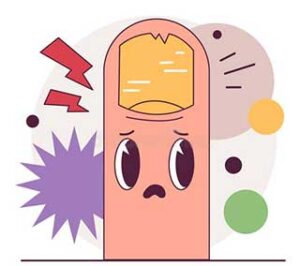Oral candidiasis — is a fungal infection, the causative agents of which are different types of fungus of the genus Candida. These microorganisms belong to the conditionally pathogenic, that is, they are constantly in the human oral cavity without causing disease. Activate the reproduction of the fungus and the development of the disease may hormonal changes in the body, hypothermia, endocrine disorders, suppression of immune functions of the body. Infants and elderly people are most susceptible to candidiasis: children’s immunity is still forming, while the immune system of the elderly is often weakened by chronic diseases.
Under the influence of specific substances excreted by the fungus, an immune response is generated in the body, which manifests as an allergic reaction as damage to the oral mucosa. Candida also have a range of enzymes that can invade the cells of human epithelial tissues and destroy them.
Contents
What candidiasis looks like?
General symptoms of thrush are redness of the mucous membrane of the mouth, swelling, white coating of the tongue, dry mouth, and oral rashes that look like semolina. Wounds may appear in the corners of the lips. If candidiasis has moved to the pharyngeal mucosa, you may see a curd-like plaque on the tonsils. A person with candidiasis feels pain when eating, talking, burning, tingling, and dry mouth.
You can experience the disease in different ways, and it may take several forms.
Acute pseudomembranous candidiasis, aka «thrush»
More common in children than adults. A newborn baby can catch candidiasis from the mother when passing through the birth canal and while breastfeeding. Diseases «thrush» Are susceptible to older children whose immune system has been weakened by long-term infectious diseases. Also «thrush» It occurs against a background of hypovitaminosis, endocrine disorders, prolonged use of antibiotics. On the mucous membrane of the tongue, palate and cheeks, white dotted growths form, merging into patches that have a curd-like appearance. Mucous membrane of the mouth is bright, with dry mouth. The child’s tongue is often covered with plaque, swollen, and the papillae are enlarged. The child may refuse to eat, complain of discomfort, tingling, and itching in the mouth. If you don’t seek medical attention on time, the process spreads throughout the body and is accompanied by an increase in body temperature.
Mycotic scab
There are cracks in the corners of the mouth, covered with plaque or crusts. Sometimes the process spreads to the lips, they become a bright color and covered with gray scales. Candida cheilitis develops. Burning and tingling sensation in the area, pain when eating, opening the mouth, and smiling are present. Often occurs in the elderly with pathological changes in the bite.
Chronic and acute atrophic candidiasis
White plaque may be seen on the sides of the tongue and in the deep folds of the mouth. The tongue has a crimson color and shiny surface, and the papillae are flattened. The corners of the mouth may be affected. Commonly seen in people who use removable orthopedic appliances for a long time. This candidiasis may appear suddenly or continue to bother the patient for a long time.
Chronic hyperplastic candidiasis
The oral mucosa is red. The tongue and palate have a thick, whitish-grayish plaque, with occasional yellow-gray films. Surface of the palate often becomes congested. Mouth feels dry, painful when eating.
How to treat candidiasis?
If you have signs of thrush, see a dentist first. He or she will examine the oral cavity and determine what may have caused the onset of the disease.
Next, the dentist will prescribe topical medications with antifungal and analgesic effects. To confirm the diagnosis, biological material is collected from the oral mucosa and sent to the laboratory for culture. This is necessary for confirming the diagnosis.
If the dentist suspects that the patient has a pathology that may have caused the development of candidiasis, he or she will be referred to a specialist. Treatment of the background disease is necessary, in order to avoid future recurrences of the fungal infection.
Treatment of candidiasis: Recommendations for the patient
It is also recommended that temporarily removable prostheses be withheld for the duration of the treatment. If it is necessary to wear removable prostheses on a daily basis, regular treatment with the same antiseptics as in the mouth is recommended. People who are sick will also need to change their diets. Foods high in carbohydrates, starches, and sugar encourage the growth of Candida fungus. They create an environment in the mouth that is favorable for reproduction of the pathogen. For a speedy cure, it is desirable to stick to a healthy diet, drink plenty of water.
Oral hygiene after each meal. Follow all your doctor’s instructions, rinse your mouth regularly, and use only those medications prescribed by your doctor. If white plaque does not come off the tongue or cheeks, do not try to remove it on your own. You could traumatize the oral mucous membrane, allowing the candidiasis pathogen to enter the bloodstream and the infection to spread throughout the body.
Candidiasis: Preventive measures
Candida fungus may reside in cavities of cavities or untreated root canals. Sometimes infiltrates microscopic cracks in and under dentures and covers orthopedic appliances. To prevent candidiasis, it is recommended to perform good oral hygiene, timely replacement of obsolete bridges and crowns.
Avoid self-treatment. Incorrect drug therapy can induce a state of dysbiosis, resulting in a number of «useful» The body’s microflora will decrease and pathogenic microflora, such as candidiasis pathogens, will increase.
If there is a small child in the house, try to adhere to the rules of hygiene. Avoid hypothermia, stressful situations, keep a normal sleep schedule to prevent a decrease in immunity.

